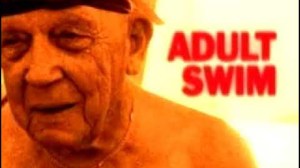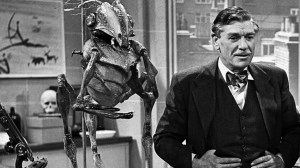
Graphic novelist Youssef Daoudi published his longest work to date last month with Monk!: Thelonious, Pannonica, and the Friendship Behind a Musical Revolution. He takes readers on a journey of bebop founder and jazz genius Thelonious Monk, specifically focusing on his relationship with Pannonica de Koenigswarter, a wealthy scion of the Rothschild family. What emerges is a revealing story for jazz experts and novices alike, one that goes far beyond the birth of a musical movement and into themes that defined the central pair’s fraught moment in history and the world around them.
Videos by ComicBook.com
ComicBook.com contributor Chase Magnett spoke with Daoudi about his experience with jazz music, the process of creating Monk!, and some of the big ideas behind this impressive new graphic novel.
ComicBook.Com: Do you recall when you first became a fan of Thelonious Monk or jazz as a whole?
Youssef Daoudi: I discovered Thelonious Monk later in life. Of course, everyone listened, without knowing, to some big hits of his, like “Around Midnight.” I was interested in jazz when I was 12 or 13, something like that; it was some kind of easy listening jazz in the beginning, George Benson and that sort of thing. I think Thelonious Monk came later in my early 20s. Now I don’t listen to bebop all of the time, listening to more contemporary stuff like Michael Brecker, John Abercrombie, and that kind of stuff.
So when you began to specifically listen to Thelonious Monk as a young man, what was it about his work that sustained your interest and eye through today when you are publishing a comic about his life?
I have been fascinated by a lot of musicians, but I think it came later when I learned and read more about him. I found a lot beyond his fantastic music, compositions, and way of playing; he has this quirkiness and idiosyncrasies when playing. I’ve been fascinated by other musicians before, but then I learned about his persona and his jazz adventure, with birth of bebop and early stages of the movement. And then I also discovered Pannonica de Koenigswarter and this gave me a fantastic perspective as I learned about him again through her eyes.
I’m also curious about your choice to tell this story of Monk and Pannonica now. A lot of biographies and historical stories reflect as much about the era in which they are released as when they are set. Is there a reason that you chose to explore their lives now in 2018?
That is a very interesting question. Something triggered this project… When I visited New York with my wife a few years ago, I felt something in the atmosphere. I don’t know how to describe it, but that was the trigger. I don’t have any special idea about why I did it now.
I was very happy to find out that no graphic novel existed [about Thelonious Monk] before this, so I was happy about that.

Your choice to use Pannonica’s life and relationship to frame the story provides a unique perspective in any case. The narrative naturally moves between time and very different ideas based on that relationship. There’s a point where you delve into Pannonica’s family tree and the rich history of this banking estate, which is a very unexpected place to go as a reader. Did those sorts of tangents emerge naturally as you wrote or were many of them planned from the start?
This was planned from the start. I absolutely wanted this book to not be only about jazz. I wanted it to be in jazz, meaning it would have a tendency to go in every kind of direction and have a sort of pulse and rhythm, hence the different subplots in the story. It was planned and at the same time, conceptually, I wanted the book to resemble a jazz tune or piece with some things premeditated and others completely improvised.
I was also interested in the fact that the story of Pannonica was very interesting, in and of itself. So the image you are talking about, the family tree, was there from the beginning. I was dreaming about it and wanted to do something different with that. It was a means for me to have something less boring to read, more vivid and with a bit of humor. All of these ingredients were in my very first concept.
In trying to approach this project as a jazz composition with a mix of both planning and improvisation, how did you approach planning the book before starting to write and draw the actual pages?
The overall structure was decided from the beginning. I saved space to improvise. For example, all of the dancing sequences with Monk were completely improvised. I would begin drawing him dancing and then come up with this kind of trance, something to depict what is happening in his mind. Towards the end there is a moment with his records that was completely improvised—this retrospective with all his musical legacy. I had to pick out the records I like the most.
I’m a bit of a musical cretin, so I only just became exposed to some specific albums from Thelonious Monk in preparation for our conversation. So for both myself and readers who may be unfamiliar with Monk’s catalog, would you recommend one or two albums?
Of course, more than two albums, in fact. I would recommend all of his Blue Note recording, volumes one and two of Genius of Modern Music, Brilliant Corners—very interesting, it was made at the heart of his friendship with ‘Nica—Monk’s Music is also a very good recording.
Focusing on the connection between your work and experience with music, you are telling the story of a musician in a silent medium. How did you address that transition when translating his life and work to the page?
The paradox is there and it will remain there. How can we do that? It’s quite a challenge. I have tried to convey rhythm and pulse through all of the ingredients of the book, meaning the layouts, the onomatopoeia, the text, and even the editing of the book is meant to convey this kind of rhythm—to inspire or trigger the reader’s imagination. Thelonious Monk was very inspirational to me in this instance because he was such a huge persona outside of the stage in his everyday life. He was absolutely fantastic. It helped me a lot in setting up this system to convey music through a silent medium.

As you worked to make every part of Monk convey music, did you notice certain elements of your own artistic style or approach changing?
It was my first graphic novel of this length, [340 or 350 pages], and the format was very also different from what I have been doing in Europe where the format is larger. It was very interesting to have this length and try to do the things I’ve been talking about—pulse and rhythm—the things I’ve experimented with have been new ways to let go of my strokes, of all the techniques I’ve been using until now. It was more loosely laid strokes and shades. That was the main revolution in my little world.
The story inspires the means or the technique you are going to use. If it was another story, I would have been using something different. But with the story of Pannonica and Thelonious, things appeared on the paper and in my mind and I just had to try to make it real.
This is your longest work to date and it is a substantial work. In approaching a project of this size, did you have a routine to maintain that long process of creation?
Oh my god, I am not that kind of person. In fact, I have been living with Monk, Pannonica, and the whole adventure for more than three years. I was making sure to meet the deadlines, but I’m not so organized. I just do what I can do.
Sometimes I have bursts of energy and inspiration, and I would do a lot of pages. Some weeks I would sit there and think about dialogue and refining sequences. For example, I have written or drawn some sequences in the middle before to doing something which is at the beginning of the book. I don’t like to work page after page. I like to explore.
I knew that the book was going to be very long, so I was exploring towards the end of the book before finishing some sequences from the first third. I wanted to reassure myself and feel more comfortable with the ending or some drawings I would do later. When I’m stuck in a sequence or even a drawing, I have a tendency to abandon, let it go and do something else because it’s so depressing. You feel so powerless when you cannot pull off a certain drawing or sequence or page or panel or even a line. I just let go and try do something more fun to cheer myself up.
With that process of moving around within the narrative you planned, did you find that even over the course of three years the book you first planned was similar to the one that is now being published?
It’s quite close with the exception that, paradoxically, in the final stages of the whole project I felt the need to go back into the middle. My concept would allow that, so I went back in some sequences and created them from scratch because I felt the need to do that. It was not independent from the rest, but it was a plus.
I had these images coming to me, so the signs of improvisation came at a later stage. I’ve dreamt of this very fantastic depiction of Monk’s mind and the process of improvisation and creation; I felt the book lacked these kinds of things. I didn’t want to go into too much music theory, as I’m not a musician, but I wanted to do something funny or interesting in this instance. So I created a new sequence later in the process. The book looks a lot like what I first imagined, with the exception of the things I created in the later stages.

You’ve mentioned that you dream images multiple times and that’s something that builds in the book and the dreamlike quality to some of the sequences and images. When you find yourself dreaming of these images, is there music?
Yes. Yes. There is music, but also sounds. It is a mix of sounds, music, colors, strokes… At a certain point I would be sleeping or trying to sleep and the idea pops up, so I would get up and take some notes, I was so afraid to let it slip away. After that what is very interesting is to have a projection on the paper and just draw what you see. It is not true throughout the book. Some sequences are rather difficult to do and I had to do them anyway. But a lot of the book, about seventy percent, is things I dreamt of.
There’s a real intensity to what you just described, and it reminds me of the intensity that Thelonious Monk brought to both his art and his life. He was often a difficult person to be around. Did you ever find yourself needing to take a break from spending so much time with him in both your work and dreams?
I have never been overwhelmed by his presence or vicinity in my mind. I felt so close to him or, at least, very inspired by him. Of course, I didn’t live in his time or have to be around him for real. It was not something I would find… It didn’t bother me. Plus, in the creation process I like to do different things. For example, I have been drawing very different comics about war. These were some very interesting breaks, as you have to have a break from time to time, but it was not because of Thelonious Monk or his being. Any project I am doing, I need to take a break to try to find more spontaneity and to help me return to the first thing.
Spending a great deal of time with anyone tends to alter our perspective. As you spent all of this time, on and off, with both Monk and ‘Nica, did their presence and history influence how you see yourself or the human condition?
Yes, absolutely and in many ways. As an artist this experience was absolutely extraordinary. I discovered some stuff in myself as a graphic novelist that is very new, very fresh. I have learned freedom and independence of mind and thought. Thelonious Monk didn’t care about people stating that he was a poor piano player. He was a fantastic piano player, to the contrary, but he was doing his thing. This I learned with Thelonious Monk.
Regarding life, people, humanity: Yes. Knowing that someone like Thelonious Monk and Pannonica existed gives me hope in humanity
How so?
How so? In every way. They are just inspiring personalities and human beings. That’s it.
Knowing that whatever our flaws as a species that we can produce individuals like this who leave such immense legacies in art and history, that is something capable of inspiring genuine hope.
That is absolutely right. Jazz music represents this kind of conclusion. I know jazz exists. It’s exactly what Pannonica thought about jazz and jazz musicians. In the book she mentions that the people who play this music must be so beautiful and free. The beauty of the music translates in these beings. The fact that I know jazz exists and these artists exist gives me hope in humanity.
That being said, the book is not about jazz and music all of the time. It’s about these kinds of articulations. What is our journey in life? How do we live this journey? Who are the people we meet? What are the bonds that can be so strong and so original and special? Like loving somebody, being the friend of somebody because of the genius and music and in spite all of the problems and misadventures that could happen. It was very difficult for an English baroness to be around African-American musicians at that time, but all of these hurdles were nothing to them. This is very inspiring, this community of hearts.
What is also very interesting is that when Pannonica went to be around Thelonious and the other musicians, she met another aristocrat in him. She was an aristocrat by birth and wealth. When they created this music they became their own sort of aristocrats; Monk became the Baron of Bebop. You had Duke Ellington and Count Basie, both aristocrats in their own way. You can be an aristocrat in your own way.








